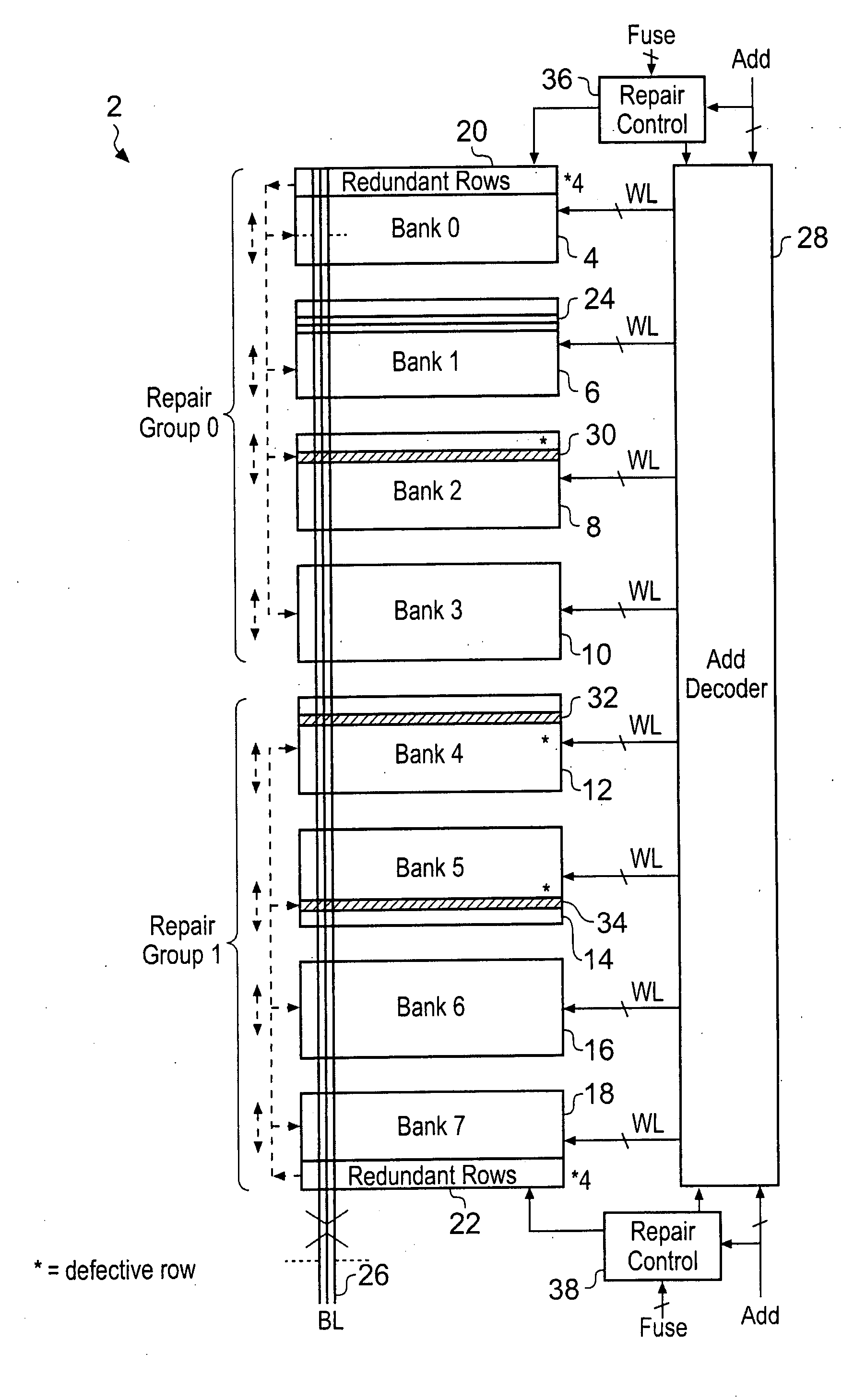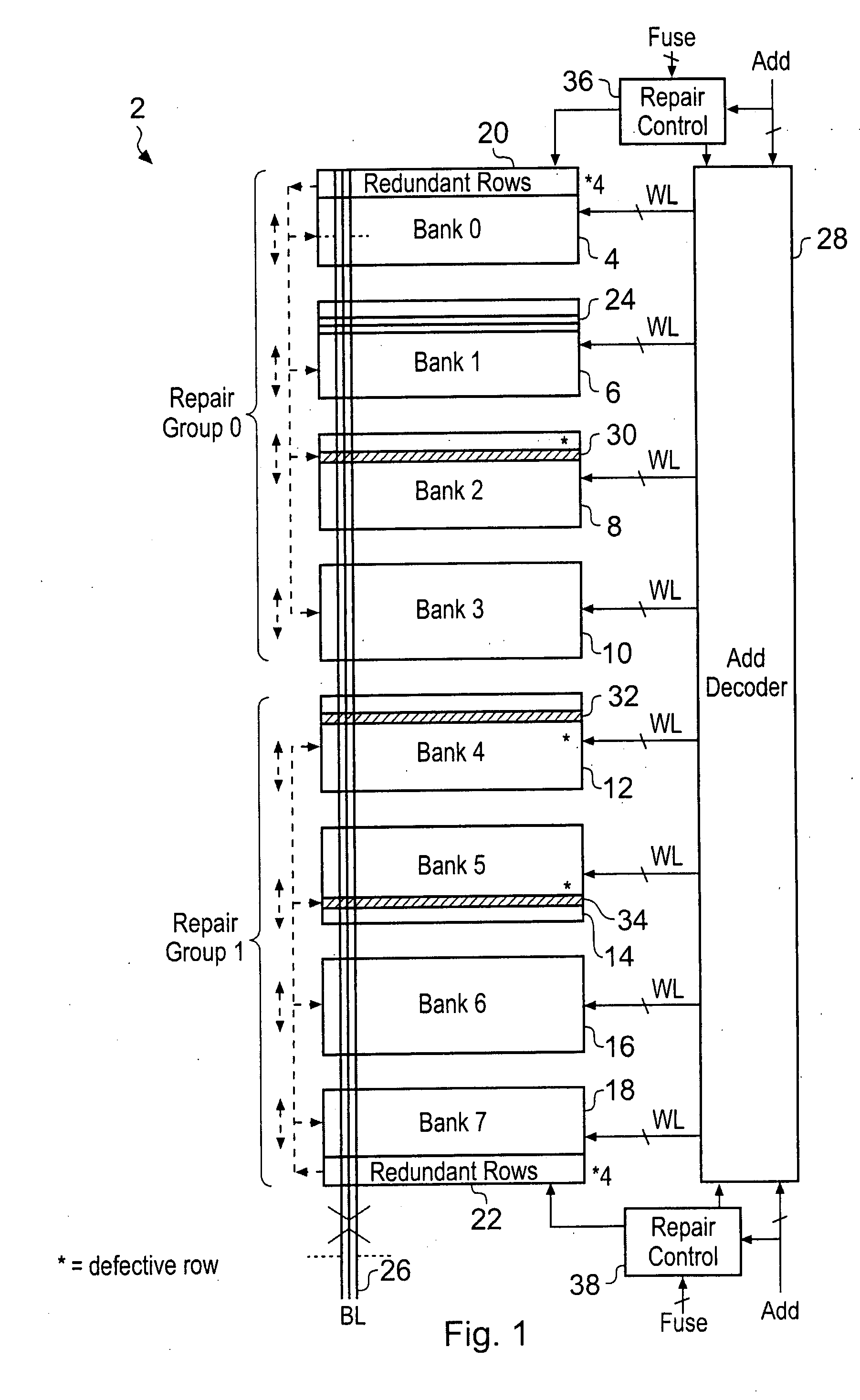Redundancy architecture for an integrated circuit memory
a technology of integrated circuit memory and redundancy architecture, which is applied in the field of redundancy architecture of integrated circuit memory, can solve the problems of insufficient redundant rows to repair all, increase the number of redundant rows, and increase the complexity of the circuit, so as to reduce the number of redundant columns and the effect of high multiplication width
- Summary
- Abstract
- Description
- Claims
- Application Information
AI Technical Summary
Benefits of technology
Problems solved by technology
Method used
Image
Examples
Embodiment Construction
[0059]FIG. 1 schematically illustrates an integrated circuit memory 2 comprising a plurality of memory banks 4, 6, 8, 10, 12, 14, 16, 18. These memory banks 4-18 are arranged into two repair groups. The first repair group Group0 comprises memory banks 4, 6, 8, 10. The second repair group Group1 comprises memory banks 12, 14, 16, 18.
[0060]As illustrated in FIG. 1, within each of these repair groups only one of the memory banks (either memory bank 4 or memory bank 18) contains any redundant rows 20, 22. Four redundant rows are provided within memory bank 4. Four redundant rows are provided in memory bank 18. The four redundant rows 20 within the memory bank 4 may act to substitute for any of the rows of memory cells 24 within any of the memory banks 4, 6, 8, 10 which constitute Group0. It will be appreciated that each of the rows of memory cells 24 comprises a plurality of memory cells each storing one bit of data and linked to bit lines 26 via which data is read from or written to th...
PUM
 Login to View More
Login to View More Abstract
Description
Claims
Application Information
 Login to View More
Login to View More - R&D
- Intellectual Property
- Life Sciences
- Materials
- Tech Scout
- Unparalleled Data Quality
- Higher Quality Content
- 60% Fewer Hallucinations
Browse by: Latest US Patents, China's latest patents, Technical Efficacy Thesaurus, Application Domain, Technology Topic, Popular Technical Reports.
© 2025 PatSnap. All rights reserved.Legal|Privacy policy|Modern Slavery Act Transparency Statement|Sitemap|About US| Contact US: help@patsnap.com



